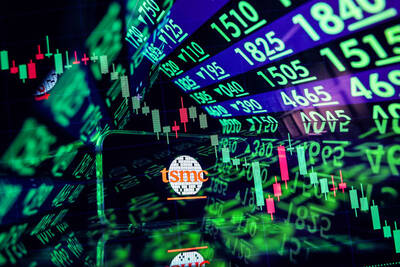The inflow of Chinese tourists next month will be positive for economic development but will make only a modest contribution to GDP, a global financial services company said, while raising its GDP forecast based on other factors.
UBS, the world’s largest manager of private wealth assets, said yesterday the economy would reap benefits from the arrival of Chinese tourists starting on July 18, but it might not be the economic godsend many have hoped for.
“Even if 10,000 Chinese were allowed to visit a day and spent NT$15,000 each during their stay, it would only raise the nation’s GDP by 0.5 percent,” said Kevin Hsiao (蕭正義), a chartered financial analyst at USB Wealth Management Research Taiwan. “But the public sentiment here is that they will bring in a huge fortune and fix the economy.”
Under the agreement between Taiwan and China, 3,000 tourists will be allowed per day.
Hsiao was optimistic about the economy, however, and raised his forecast for economic growth from 4.1 percent to 4.5 percent for this year, citing the the nation’s better-than-expected performance in the first five months.
Hsiao said exports jumped 17.4 percent between January and last month despite the economic slowdown in the US, the country’s second-largest trade partner.
“Trade with China rose 20.9 percent and trade with other Asian nations rose 26 percent during the period, more than offsetting the negative growth of 0.5 percent [in trade] with the US,” he said.
He predicted that Taiwan would continue to post export growth for the rest of the year, but the showing would not be equally lustrous in the second and third quarters because of the impact of inflation.
The government ended a six-month freeze on fuel prices on May 28 and will raise electricity rates on July 1.
The rising prices of fuel, food and raw materials have weakened domestic consumer spending and thus contributed less to the nation’s economic growth.
While the strong performance of exports is likely to drive GDP growth, Hsiao said the overall contribution from exports to GDP was declining. Exports in the first quarter accounted for 48 percent of GDP, down from 68 percent for 2005 to last year, he said.
To contain inflationary pressure, Hsiao said he believed that the central bank would hike interest rates by 0.125 percent at its quarterly meeting next week.
He said the adjustment would be modest considering the sharp rise in commodity prices, which rose 3.71 percent year-on-year last month. The negative real interest rate would dent consumer confidence, which is another concern, Hsiao said.

Taiwan Semiconductor Manufacturing Co (TSMC, 台積電) last week recorded an increase in the number of shareholders to the highest in almost eight months, despite its share price falling 3.38 percent from the previous week, Taiwan Stock Exchange data released on Saturday showed. As of Friday, TSMC had 1.88 million shareholders, the most since the week of April 25 and an increase of 31,870 from the previous week, the data showed. The number of shareholders jumped despite a drop of NT$50 (US$1.59), or 3.38 percent, in TSMC’s share price from a week earlier to NT$1,430, as investors took profits from their earlier gains

In a high-security Shenzhen laboratory, Chinese scientists have built what Washington has spent years trying to prevent: a prototype of a machine capable of producing the cutting-edge semiconductor chips that power artificial intelligence (AI), smartphones and weapons central to Western military dominance, Reuters has learned. Completed early this year and undergoing testing, the prototype fills nearly an entire factory floor. It was built by a team of former engineers from Dutch semiconductor giant ASML who reverse-engineered the company’s extreme ultraviolet lithography (EUV) machines, according to two people with knowledge of the project. EUV machines sit at the heart of a technological Cold

Taiwan’s long-term economic competitiveness will hinge not only on national champions like Taiwan Semiconductor Manufacturing Co. (TSMC, 台積電) but also on the widespread adoption of artificial intelligence (AI) and other emerging technologies, a US-based scholar has said. At a lecture in Taipei on Tuesday, Jeffrey Ding, assistant professor of political science at the George Washington University and author of "Technology and the Rise of Great Powers," argued that historical experience shows that general-purpose technologies (GPTs) — such as electricity, computers and now AI — shape long-term economic advantages through their diffusion across the broader economy. "What really matters is not who pioneers

TAIWAN VALUE CHAIN: Foxtron is to fully own Luxgen following the transaction and it plans to launch a new electric model, the Foxtron Bria, in Taiwan next year Yulon Motor Co (裕隆汽車) yesterday said that its board of directors approved the disposal of its electric vehicle (EV) unit, Luxgen Motor Co (納智捷汽車), to Foxtron Vehicle Technologies Co (鴻華先進) for NT$787.6 million (US$24.98 million). Foxtron, a half-half joint venture between Yulon affiliate Hua-Chuang Automobile Information Technical Center Co (華創車電) and Hon Hai Precision Industry Co (鴻海精密), expects to wrap up the deal in the first quarter of next year. Foxtron would fully own Luxgen following the transaction, including five car distributing companies, outlets and all employees. The deal is subject to the approval of the Fair Trade Commission, Foxtron said. “Foxtron will be